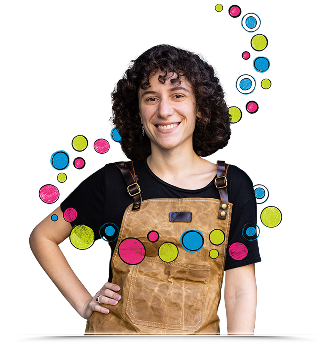FITTING VPRIV INTO YOUR LIFE
Living with GD1 sometimes means factoring in some extra planning and thinking ahead, and might mean you need some extra support an guidance as you journey through life.
The people in these hypothetical patient profiles have experienced growing up and living with GD1, navigating through various stages that you might be facing in your own life. Their experiences might help you navigate your own, similar circumstances.
LIBBY – STARTING SCHOOL
MATEO – GOING TO COLLEGE ALISON – TREATMENT CHOICE NATASHA – PREGNANCY DONNA – TAKING OTHER MEDICATION MICHAEL – FINDING SUPPORT JOHN – RETIREMENT AND TRAVELING
*Patient profiles for illustrative purposes only and do not depict actual patients
*Patient profiles for illustrative purposes only and do not depict actual patients
KEY TOPICS
- Newborn Screening
- Symptom Monitoring
- Starting School
- Growing-up with Type 1 Gaucher
LIBBY’S STORY*
When Libby’s parents decided to start a family, a relative told them about genetic screening as part of family planning, given their Ashkenazi Jewish ancestry. People with this ancestry have a one in 17 chance of being a carrier for GD1. With the help of a genetic counselor, Libby’s parents discovered they were both GD1 carriers. When Libby was born and underwent newborn screening, she had positive results for GD1. Their genetic counselor discussed next steps with them.
Libby was asymptomatic at first. Her first GD1 symptom, frequent nosebleeds, appeared around age four. Unsure about starting treatment, Libby’s parents took a “watch and wait” approach with their doctor. Libby was monitored every six to 12 months for changes to her spleen, liver, bone marrow, and blood. Eighteen months later, her nosebleeds were becoming more frequent, and tests showed abnormal platelet counts. Libby’s parents, along with her doctor, made the decision to start her on VPRIV infusions.
As Libby was starting school around this time, her parents met with the school principal to explain her condition and needs, such as the need for an infusion once every two weeks, and that she may experience symptoms such as fatigue. Libby’s parents provided the school nurse with resources to help explain GD1 and VPRIV.
Now, aged eight, Libby is growing up and starting to understand more about her disease. With her parents, she has been learning about GD1 online, and has watched some patient story videos to hear from others. Libby’s parents are looking for community events about rare disease and GD1 so Libby can connect with others who have similar experiences.
 BACK TO ALL PROFILES
BACK TO ALL PROFILES






